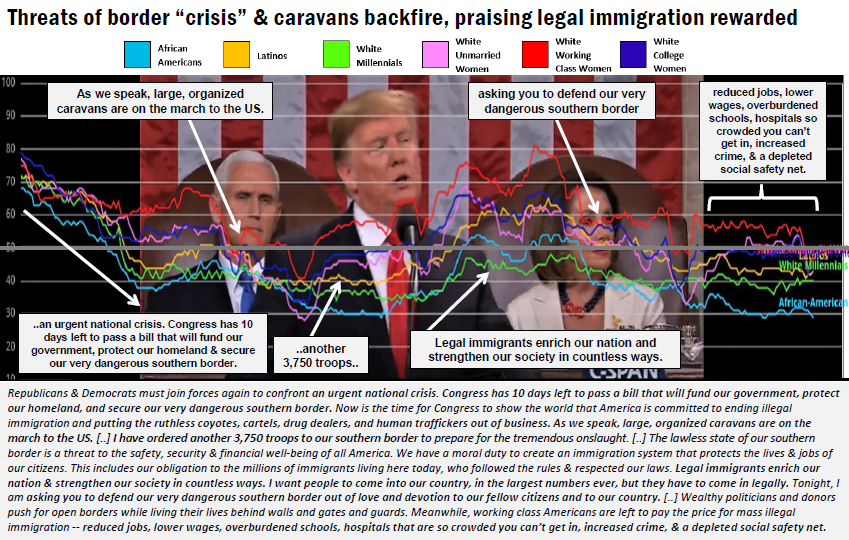The following article by Michael Tomasky, editor of Democracy: A Journal of Ideas and author of “If We Can Keep It: How the Republic Collapsed and How it Might Be Saved,” is cross-posted from The Daily Beast:
So now we have nine declared Democratic candidates for president, with presumably a few more on the way. I don’t know yet if it’s a great field. They all have strengths, they all have weaknesses.
But here’s one thing I like so far. I’m not hearing many sappy calls for unity or pledges to bring the country together. This is a grand development.
Pundits of course are supposed to bemoan this and demand that presidential aspirants summon us toward our better angels. I may have believed this once, but those days are gone. Calling for unity is a sucker’s game for Democrats and has been for a number of years.
It’s been clear since the 1990s that the Republican Party has had no interest in uniting the country. The GOP’s interest—since Newt Gingrich, the rise of Rush and the radio talkers, the illegitimate Bill Clinton impeachment, and the Brooks Brothers Riot of the 2000 election—has been to win. To dominate the other guys. Yes, George W. Bush said while campaigning in 2000 that he’d be a “uniter, not a divider,” and of course he employed some of that kind of rhetoric after 9-11.
But he rarely governed that way. This is largely forgotten now, but after the Supreme Court named him president, there were calls for him—the man who had lost by 500,000 votes and had very obviously carried Florida only because of a bad ballot design that had Palm Beach Jews voting for Pat Buchanan—to appoint moderates to key positions and govern from the center. He did nothing of the sort.
Barack Obama did talk more about unity, and about working across the aisle. What did it get him? Steamrolled, mostly. Key Republicans gathered at a restaurant the night of the inauguration and made a pact not to give him any support on his major initiatives. Mitch McConnell said openly that his goal was to make Obama a “one-term president.” They failed at that, but the list of initiatives on which Obama hoped for but did not receive any bipartisan support is long indeed (minimum wage, infrastructure, overtime pay, and on and on).
Then along came Donald Trump. I give him a perverse kind of credit for not making any stupid, empty pledges to unite the country. He needed a deeply divided country to have a chance, and he knew it. So he stoked division.
I’m not saying this cycle’s crop of Democrats should do that. Obviously, no Democrat would talk like Trump anyway, because that kind of bigoted talk would get a person drummed out of the country’s multiracial party even as it got him celebrated and elevated in the country’s white ethno-nationalist party.
I am saying, though, that Democrats should stop pretending they can unite the country. They can’t. No one can. What they can do, what they must do, is assemble a coalition of working- and middle-class voters of all races around a set of economic principles that will say clearly to those voters that things are going to be very different when they’re in the White House.
I like most of what I’m hearing so far on this front. Putting aside for present purposes their possible weaknesses, which we’ll have plenty of time to discuss, several candidates have come out of the gate emphasizing fighting for their America instead of some dreamy, chimerical vision of contentless unity. “Kamala Harris for the People” is a fighting slogan. For my money, she’s not nearly specific enough yet about what precisely she’s going to fight for, especially on economic questions, but it’s a start. Amy Klobuchar’s speech had some good pugilistic rhetoric about the pharmaceutical companies. Elizabeth Warren’s speech used the word “fight” 25 times.
And not-yet-declared candidate Sherrod Brown struck similar notes in a speech to the New Hampshire Young Democrats Saturday night. Brown also did something else very smart, something I’m on a kick about and will write a hundred times between now and the end of the primary season next year: He talked about small towns. He talked about the opioid crisis, which is crushing rural America but isn’t really on New York, California, or Washington radar screens. Brown is out there saying “I can get enough small-town white people back on our side,” while also emphasizing his record on civil rights and abortion and LGBTQ issues.
That’s a kind of reaching out that is absolutely necessary. But it is not the same as making some treacly, sentimental unity pitch. Brown is saying come join the fight. But saying that acknowledges the existence of the fight.
That’s where Democrats need to be. I hope that if Beto O’Rourke jumps in, he gets this. It’s where people’s heads are now anyway. We’re locked in a fight for the direction of the country. We have a president who’s about to use emergency powers to build a wall that a majority of the country doesn’t want. And in economic terms, we’re at a potentially historic and even revolutionary moment. As I wrote in the Times recently, there are strong and encouraging signs that supply side’s hegemony has run its course, and the public may be open again to Keynesian principles.
Is it kind of sad that unity rhetoric has no place in today’s politics? Sure. But the best way to unite the country, to the extent that such is possible anymore, is to win the White House and Congress and start passing laws and imposing rules that will help regular people again.
And I’m all for reducing polarization–I just wrote a book about it–but that’s a project that will need 20 years, and besides, reducing polarization requires defeating extremist radicalism. That requires pugnacity. Let the disunion begin.




